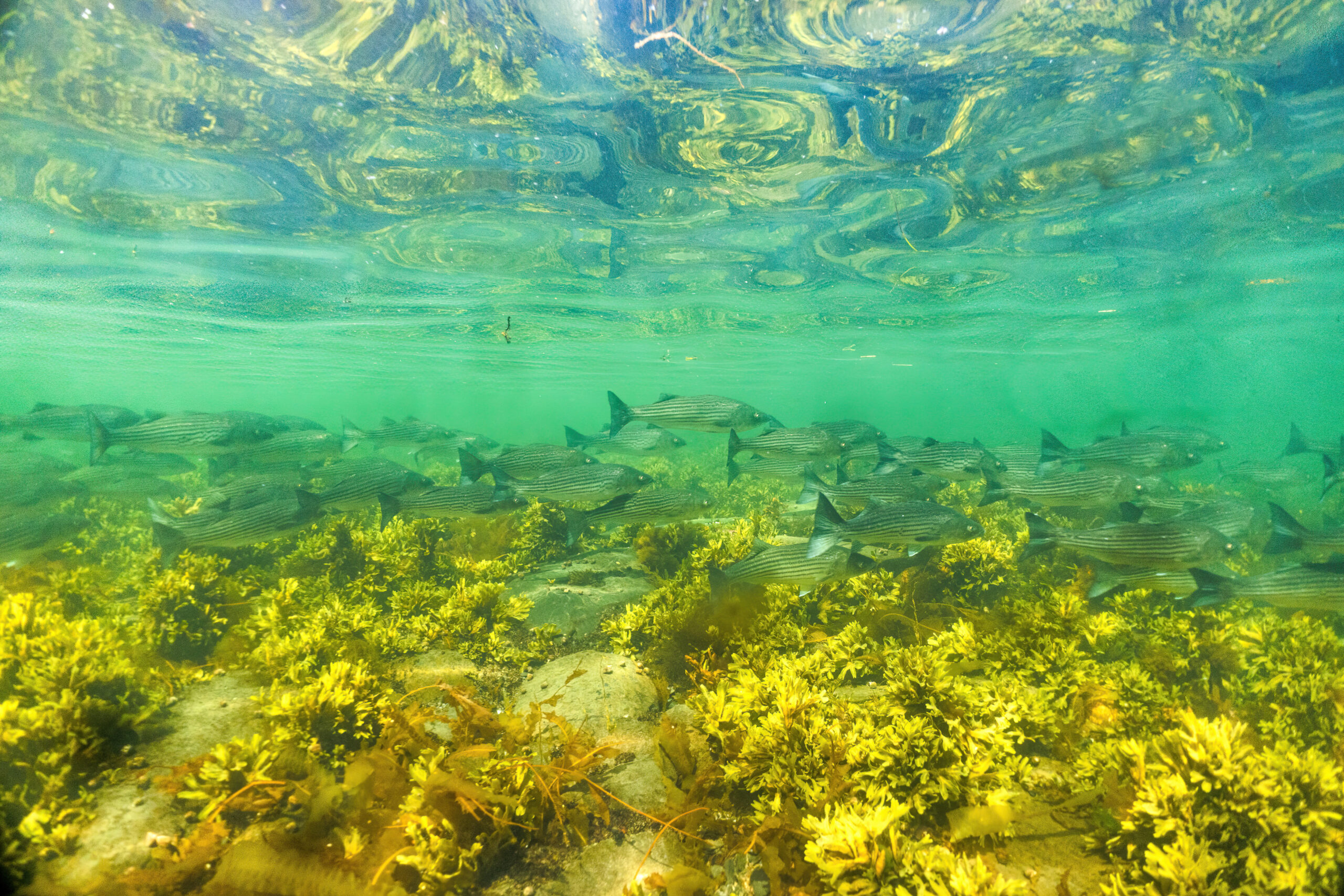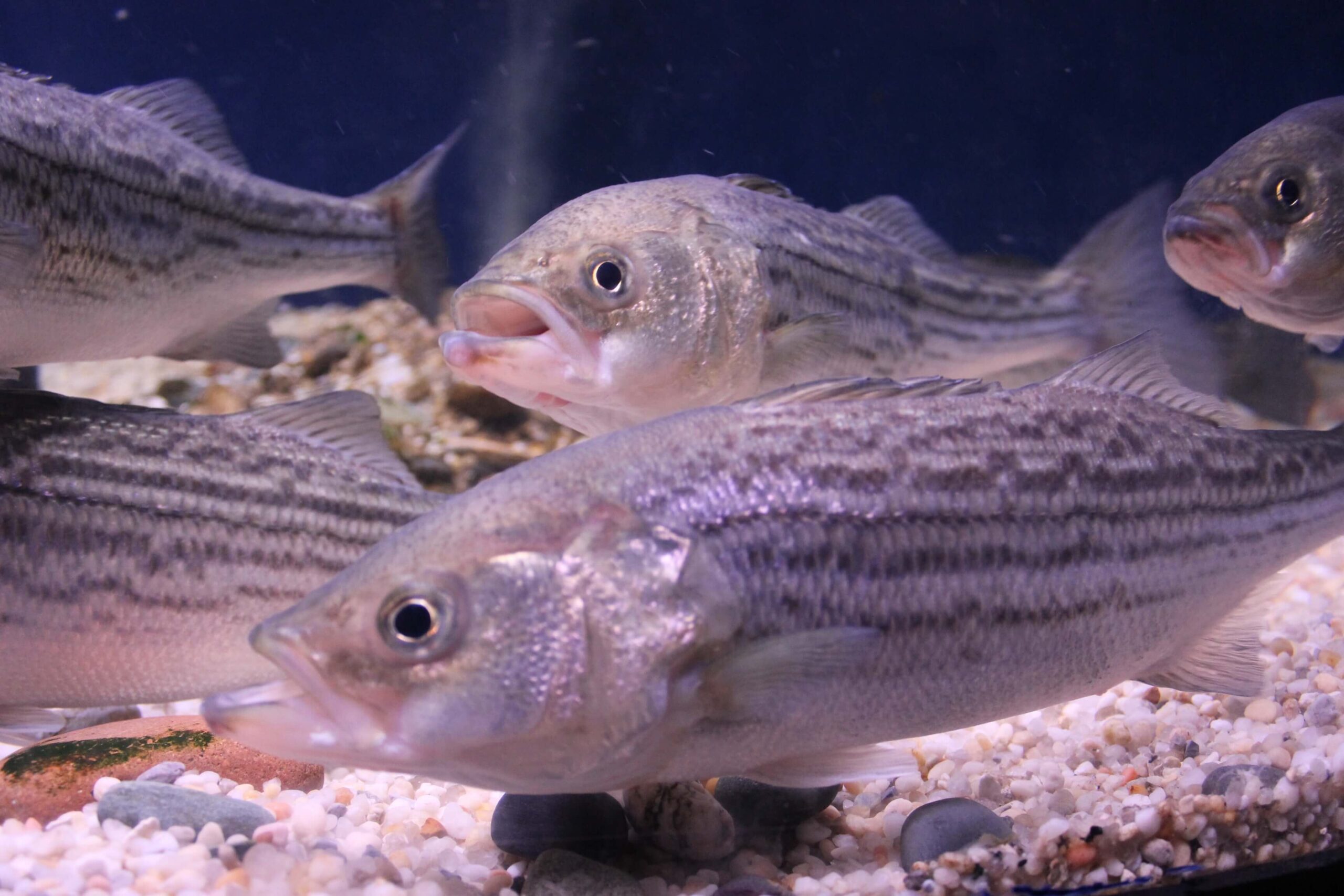
SIZE:
90 cm, up to 200 cm.
LIFE EXPECTANCY:
Up to 30 years.
CLIFE CYCLE:
Sexual maturity around 3 years for males and 4 to 5 years for females.
Spawning takes place in rivers in late May and early June. Fertilized eggs incubate for two or three days before releasing the young striped bass. Larvae evolve in fresh and brackish waters. The juveniles then move to salt waters close to the coast.
The striped bass has a streamlined body with a dark olive green back and white belly. It has seven or eight dark horizontal stripes on a silvery background. Its head is pointed, with the jaw projecting forward. Its tail is forked and symmetrical. It has two dorsal fins. The first fin is lined with spines.
Near the bottom, up to 30 m in depth.
Its habitat varies throughout its life. The striped bass lives in salt water and migrates to fresh water to reproduce. It is an anadromous fish.

Striped bass lives in schools.
Credit : Richard Larocque, photo taken in Mont-Louis.
PREYS:
Squid
Crabs
Eels
Herring
Floun-der
PREDATORS:
Atlantic cod
Seals
Sharks
No commercial type of fishing.
REGULATIONS:
In Québec, only sports fishing is authorized under certain conditions.
The striped bass is a popular fish among recreational anglers. It is known for its relentless fighting and acrobatic jumps.
Commercial fishing ceased in 1996, and recreational and aboriginal fishing ceased in 2000. Recovery efforts made it possible to reopen the latter two types of fishing in 2013.
A striped bass, which is not striped
In October 2020, a fisherman caught a striped bass without stripes in the Miramichi River. This would be the first striped bass without stripes ever observed.
BENEFITS:
Striped bass is a good source of omega-3 fatty acids, protein and vitamin B12.
LET’S COOK:
Delicate, slightly sweet flavour. Creamy flesh.
Raw, the flesh is translucent white and slightly pinkish. Cooked, it becomes opaque, tender and flaky.
OUR CULINARY ADVICE:
- Striped bass can be prepared whole or filleted, grilled or stuffed en papillote (in foil).
- Leave the skin on when grilling. It will be crispy and will complement the moister flesh nicely.
- Given its endangered status, we do not recommend eating striped bass.





